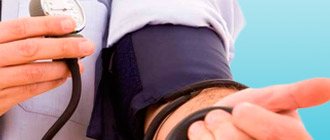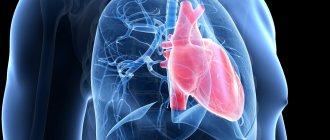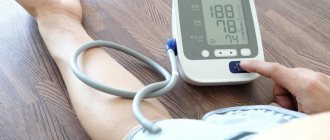Arterial hypertension. Relevance
Information
About the locations of the republican medical and educational campaign
“A healthy heart means a successful future”
| No. | Health care institution | Location | Address | Date tested | Responsible |
| 1 | Healthcare institution "9th city clinic" | Pharmacy No. 25 | St. O. Koshevoy -10 | 26.05.2016 | Rud Olga Semyonovna Acting head of the OMP t. 398-94-81 |
| 2 | Healthcare institution "9th city clinic" | MOH | St. Radial, 7 | 26.05 .2016 | Kastenkova Galina Petrovna paramedic at the health center t. 296-00-22 |
| 3 | Healthcare institution "9th city clinic" | Trolleybus Park No. 5 State Enterprise "Minsktrans" | St. Soltysa 26 | 26.05.2016 | Matyushenko Maria Vyacheslavovna paramedic at the health center t. 246-59-74 |
| 4 | Healthcare institution "9th city clinic" | UE "MGMC" | St. Dolgobrodskaya, 41 | 26.052016 | Shitikova Nina Ivanovna paramedic at the health center t. 230-57-03 |
| 5 | Healthcare institution "9th city clinic" | State Institution “Department Store Start “X” | Dolgobrodskaya street, 26 | 26.05.2016 | Parmon Irina Frantsevna valeologist 9GP t. 398-94-81 |
The qualitative component of a person’s life, his longevity and preservation of working capacity are directly related to the functional activity of the cardiovascular system, the accumulated “baggage” of diseases affecting the heart and blood vessels. The greatest contribution to premature mortality of the population is made by: arterial hypertension, hypercholesterolemia, smoking, insufficient consumption of vegetables and fruits, excess body weight, excess alcohol consumption and physical inactivity.
Arterial hypertension is the most common controllable factor in cardiovascular morbidity and mortality in most countries of the world. About half of the cases of myocardial infarction and about 80% of stroke cases are associated with high blood pressure, which determines the high socio-medical significance of measures aimed at lowering blood pressure. European experts predict that by 2025, 29.0% of men and 29.5% of women worldwide will have hypertension, but the prevalence may vary significantly in different regions of Europe and the world.
It is known that the incidence of death from stroke and coronary heart disease increases progressively and linearly, starting from a blood pressure level of 115/75 mm Hg. in the age group 40-80 years. For every 20 mm Hg. increase in systolic blood pressure or 10 mm Hg. An increase in diastolic blood pressure from the indicated figures increases mortality from coronary heart disease and stroke by 2 times.
Arterial hypertension is a chronic stable increase in blood pressure, in which systolic blood pressure is 140 mmHg. or higher and/or diastolic blood pressure equal to 90 mmHg. or higher.
It should be kept in mind that when visiting a doctor, the diagnosis of arterial hypertension is based on data from at least two measurements of office blood pressure, during at least two visits with an interval of 1-2 weeks. If the patient's blood pressure is ≥180/110 mmHg. The diagnosis of arterial hypertension can be established during the first visit. The doctor’s tactics depend on the detected blood pressure level.
In the city of Minsk, the detection of people with arterial hypertension increased from 22.4% in 2008. up to 31.9% in 2013. The share of uncomplicated arterial hypertension in the structure of newly diagnosed arterial hypertension was 37.8%.
Structure of newly diagnosed arterial hypertension:
- essential (primary) arterial hypertension - 96.1%, a decrease of 0.3% (2012 - 96.4%);
- symptomatic arterial hypertension (against the background of diseases of other organs and systems) - 3.9%, an increase of 8.3% (2012 - 3.6%).
The low proportion of symptomatic arterial hypertension in the structure is due to insufficient detection of this pathology, which is associated primarily with the complexity of diagnosis.
It is known that arterial hypertension is asymptomatic for many years and one of the first manifestations of the disease can be a life-threatening complication (heart attack, stroke).
In 2013, 3,292 cases of myocardial infarction were registered among patients with arterial hypertension in the city of Minsk. 210 patients (6.4%) died from acute myocardial infarction. In 3619 cases, acute cerebrovascular accidents developed in patients with arterial hypertension. Lethal acute cerebrovascular accidents 1083 cases (29.9%). 1867 patients died from other complications of arterial hypertension, and in 2012 - 1642 patients.
Arterial hypertension: misconception and truth.
Misconception: There is “working pressure”, and if it is elevated, then there is no need to reduce it.
Truth: There is no such thing as “working pressure.” If a patient, while measuring his blood pressure, finds at least twice that the numbers are greater than 140/90 mmHg, then with a high degree of probability this means that he has arterial hypertension. In this case, it is necessary to clarify the diagnosis with a doctor.
Misconception: if nothing bothers you, then there is no arterial hypertension.
Truth: Hypertension is called the “silent killer.” The insidiousness of the disease lies precisely in the fact that it can occur unnoticed by the patient himself. Even if there are no complaints, high blood pressure (without treatment) inevitably has a destructive effect on the “target organs”: heart, kidneys, blood vessels, brain. Thus, without measuring blood pressure it is impossible to determine the disease. It is important to measure your blood pressure even if you feel well.
Misconception: If blood pressure has returned to normal, drug therapy should be discontinued.
Truth: the goal of treating arterial hypertension is not just to reduce blood pressure numbers, but also to prevent adverse consequences (heart attack, stroke, kidney failure) and also to protect target organs. Since arterial hypertension is a chronic disease, if drug therapy is discontinued, blood pressure will increase again, which can lead to complications such as heart attack and/or stroke. Antihypertensive drugs are not intended for a course of treatment. Only constant use of medications provides a lasting therapeutic effect.
Misconception: You can choose medications to lower blood pressure on your own.
Truth: even with the same pressure values in different people, treatment should be selected strictly individually. The choice of drug is made by the doctor taking into account the level of increase in blood pressure, the presence of concomitant diseases, risk factors, possible interactions with other medications that the patient is taking, as well as the presence of contraindications to the prescription of this drug.
Misconception: Arterial hypertension is a disease of older people.
Truth: Arterial hypertension has become “younger” in recent years. People who have barely reached the age of 30 suffer from high blood pressure. And in young people the disease can take more severe forms.
Arterial hypertension develops according to its own laws, regardless of whether the patient knows about it or not: over time, an increase in the mass of the heart occurs - hypertrophy, the walls of blood vessels lose their elasticity and thicken, and their lumen narrows, as a result of which less and less blood flows to the organs and tissues. Atherosclerosis develops at an accelerated pace, which further impairs the blood supply to organs. First of all, the so-called “target organs” are affected: the brain, heart, kidneys, retina. Against the background of long-term arterial hypertension, various mechanisms of development of not only acute, but also chronic forms of cerebrovascular pathology are realized, leading to severe cognitive impairment up to dementia.
Thus, arterial hypertension requires a very disciplined and responsible approach to fulfilling prescriptions and the patient’s attitude towards strict normalization of blood pressure. Even the best doctor will not be able to effectively combat hypertension if the patient is not interested in it. Keeping patients informed about their illness will not only prolong years of activity, it can even save lives.
Treatment of arterial hypertension.
What is the modern treatment of arterial hypertension? There are two groups of treatment methods – non-drug and medicinal.
The non-drug method involves measures aimed at combating risk factors (lifestyle modification). Appropriate lifestyle changes are important, although lifestyle changes should never be a reason to delay drug therapy in high-risk patients.
Recommended lifestyle changes with proven blood pressure-lowering effects include limiting salt, high consumption of vegetables and fruits, low-fat and other diets, losing and maintaining weight, and regular exercise. In addition, a strong recommendation to quit smoking is absolutely mandatory.
Preventing excess weight or reducing existing weight is an important goal. Weight loss is strongly recommended for obese individuals (body mass index greater than 30 kg/m2) and overweight individuals (body mass index greater than 25 and less than 30 kg/m2), as well as patients with increased abdominal adipose tissue, as measured by circumference waist (for men – more than 102 cm, for women – more than 88 cm).
Food should be varied and energy intake should be optimal to maintain ideal weight. In your diet, it is recommended to limit the consumption of animal products rich in cholesterol and saturated fat. These products include: fatty meats, lard, butter, sour cream, egg yolk, fatty cheese, sausage, sausages, all offal. It is recommended to replace animal fat with vegetable fat, since the latter is rich in anti-atherogenic unsaturated fats.
Another important principle of nutrition is to increase the consumption of plant-based foods that can bind and remove cholesterol from the body. Recommended to use:
- dietary fiber (at least 30 g per day). They are found in large quantities in fruits (pears, apples, oranges, peaches), berries (raspberries, strawberries, blueberries), vegetables (cauliflower, broccoli, green beans), legumes (peas, lentils, beans);
- pectins (at least 15 g per day). Contained in fresh fruits (apples, plums, apricots, peaches), berries (black currants), vegetables (carrots, beets).
There is evidence of a cause-and-effect relationship between salt intake and blood pressure. In addition, excess salt intake may play a role in the development of resistant hypertension. You should limit your daily salt intake. This can be achieved if you salt your food less and avoid eating canned food, semi-finished products, and fast food products.
In the non-drug treatment of arterial hypertension, physical exercise plays a very important role. It is necessary to exercise at least 3 times a week for an hour. Before starting exercise, you should consult with a cardiologist who can recommend a set of approved exercises for each patient. It is necessary to start classes gradually, very slowly increasing the load.
It is extremely important to convince the patient to stop any form of smoking, using all the necessary arguments. Quitting smoking for two years reduces the risk of coronary death by 36% and non-fatal myocardial infarction by 32%.
There are 5 principles that will help you cope with the difficult task of quitting your addiction to tobacco:
- ask – systematically identify smokers (at every call);
- assess – determine the patient’s degree of addiction and his readiness to quit smoking;
- advise - convince all smokers to categorically quit smoking;
- help – promote a smoking cessation strategy, including advice on lifestyle changes, nicotine replacement therapy and/or pharmacological intervention;
- long-term monitoring, with mandatory regular visits to the doctor by the smoking patient.
Currently, there are many antihypertensive drugs: diuretics (indapamide, hydrochlorothiazide), ACE inhibitors (lisinopril, ramipril, perindopril), calcium ion antagonists (amlodipine, nefidipine), beta blockers (bisorolol, metoprolol, carvedilol), angiotensin receptor antagonists (losartan, irbesartan, valsartan), combinations of various drugs in one tablet, others. Their effectiveness has been proven by studies conducted in different countries of the world. Modern manufacturers produce drugs that meet the principle of maximum convenience for humans - one, maximum two doses of one tablet per day. There are depot drugs (the names contain the letters R, XL, SR), they do not act sharply, but are released into the blood gradually and over a long period of time so that the concentration of the drug remains constant for 12-24 hours to prevent a rise in blood pressure. It is rational to use combinations of fixed doses of two antihypertensive drugs in one tablet, since reducing the number of tablets that the patient must take daily improves adherence to treatment (which, unfortunately, is low in hypertension) and improves blood pressure control.
The choice of drug is made taking into account the level of increase in blood pressure, the presence of other diseases, risk factors, possible interactions with other drugs, and the presence of contraindications. Finding the right treatment may take some time and several appointments with your doctor.
Arterial hypertension requires a very disciplined and responsible approach to fulfilling prescriptions and the person’s attitude towards strict normalization of blood pressure. It is important to know that the concept of “working pressure” does not exist. The main thing is to take your medications constantly and regularly.
Arterial hypertension and its prevalence among the population
Arterial hypertension is one of the most common diseases of the cardiovascular system. It has been established that 20–30% of the adult population suffer from arterial hypertension. The prevalence of the disease increases with age and reaches 50–65% in people over 65 years of age.
Arterial hypertension is one of the most common chronic nonspecific human diseases, which overall, according to WHO, accounts for 30% of all deaths. Available statistics for Russia indicate that at least 40% of our population suffer from hypertension; 58% of women and 37% of men suffer from arterial hypertension; only 48% of women and 21% of men are treated, but blood pressure reaches the target value in only 17. 5% women and 5.7% men. Moreover, hypertension now occurs even in children. 3.5% of current children and adolescents in Russia have hypertension.
Thus, currently the prevalence of arterial hypertension is epidemic in nature, and the problem of hypertension can be regarded as a large-scale non-infectious pandemic. The need to combat hypertension is due to the fact that it is one of the leading causes of disability and mortality. A prolonged increase in blood pressure leads to target organ damage and the development of cardiovascular complications (heart failure, myocardial infarction, cerebral stroke and renal failure).
Thus, the main indicator of the effectiveness of arterial hypertension therapy is achieving and maintaining control over the disease (achieving the target blood pressure level). The high prevalence and socio-economic impact of arterial hypertension on the life of society and each patient determine the need for prevention and timely identification of risk factors, the adequacy of therapy, and the prevention of complications.
Purpose: Epidemiology of arterial hypertension. The influence of risk factors on the course of hypertension, in particular physical activity.
Relevance: despite significant advances in the study of the etiopathogenesis of arterial hypertension (AH), this problem still remains one of the most pressing in modern medicine, one of the most significant social problems. The latter circumstance is associated both with the wide spread of this disease and with the fact that high blood pressure contributes to the development of the most important cardiovascular accidents, leading to high mortality in Russia (myocardial infarction and cerebral stroke). In the structure of hypertension incidence, the proportion of young people has increased. The high prevalence of hypertension and the severe complications it leads to require further development of methods for early detection and prevention of this disease.
What is arterial hypertension?
Arterial hypertension is a persistent increase in blood pressure from 140/90 mmHg. Art. and higher. Essential hypertension (hypertension) accounts for 90–95% of cases of hypertension. In other cases, secondary, symptomatic arterial hypertension is diagnosed: renal (nephrogenic) - 3-4%, endocrine - 0.1-0.3%, hemodynamic, neurological, stress, caused by taking certain substances (iatrogenic) and hypertension in pregnant women, in which increased blood pressure is one of the symptoms of the underlying disease.
Table 1
Modern gradation of blood pressure indicators according to the World Health Organization (WHO), recommendations of the Ministry of Health of the Russian Federation
| Category AD | Upper or systolic pressure (mm Hg) | Lower or diastolic pressure (mm Hg) |
| Hypotension (low blood pressure) | less than 100 | less than 60 |
| Optimal blood pressure | 100 –119 | 60–79 |
| Normal blood pressure | 120–129 | 80–84 |
| High normal blood pressure | 130–139 | 85–89 |
| Moderate hypertension | 140–159 | 90–99 |
| Moderate hypertension | 160–179 | 100–109 |
| Severe hypertension | more than 180 | more than 110 |
The incidence of high blood pressure increases significantly with age. According to large-scale surveys conducted in recent years, the incidence of hypertension in people aged 50-59 years was found in 44% of cases, in people aged 60-69 years - in 54%, and in people over 70 years old - in 65% of cases. All this makes the problem of hypertension extremely relevant.
Reasons for development
There are a number of predisposing factors:
- heredity; inherited polygenic factors causing high activity of long-acting pressor mechanisms and/or decreased activity of depressor mechanisms
‒ age (for men over 45 years old, for women over 65 years old);
- physical inactivity;
‒ obesity – increases the risk of hypertension by 5–6 times, due to the occurrence of metabolic syndrome. Excess weight also contributes to the occurrence of atherosclerosis, which leads to vasoconstriction and increased blood pressure;
- increased consumption of sodium chloride (table salt) more than 6 g per day contributes to an increase in blood pressure. Sodium increases osmotic pressure, which increases circulating blood volume and cardiac output;
- insufficient potassium intake;
- excessive consumption of alcoholic beverages disrupts the central regulation of blood pressure;
- Nicotine promotes damage to the vascular endothelium and activation of local vasoconstrictor factors.
‒ external factors:
- climate;
- unhealthy diet, especially excessive consumption of table salt
- poor water intake;
- harmful working conditions;
- residential microclimate;
- improper rest;
- sound and electromagnetic fields, radiation;
- deficiency of vitamins, essential bioelements;
- relationships with people.
Currently, scientists, starting with G. F. Lang in Russia and later the famous physiologist G. Selye in Canada, have established that an important component of the pathogenetic mechanisms leading to the development of hypertension and influencing the prognosis are working conditions, living conditions, social factors and psycho-emotional stress. Long-term mental trauma plays an important role.
Arterial hypertension clinic
Complaints when blood pressure rises: headaches in the occipital, temporal areas of a pressing or pulsating nature, heaviness in the head, dizziness, poor sleep, mood instability, decreased mental performance, noise in the head and ears. Flashing of flies or stars before the eyes, the appearance of a mesh or veil, double vision, blurred contours and outlines of objects, decreased vision. Palpitations, interruptions in heart function, discomfort in the heart area, turning into aching or squeezing pain, shortness of breath, general weakness, decreased physical performance, the appearance of edema (with a long course of the disease).
Examination reveals pallor of the skin, sometimes redness of the face, in the later period of the disease acrocyanosis, pasty or swelling of the legs (feet, then legs), forced orthopnea.
Diagnosis of arterial hypertension
The main method for diagnosing arterial hypertension is measuring blood pressure using the method of N. S. Korotkov. In accordance with the obtained blood pressure figures, the degree of arterial hypertension is determined. Blood pressure is measured using a tonometer. They are mechanical and electronic. Electronic options are convenient and easy to use, and also count your pulse.
24-hour blood pressure monitor
With a 24-hour monitor, blood pressure is measured automatically at certain intervals, most often at intervals of 15 minutes. during daylight hours and 30 min. - at night. A 24-hour blood pressure monitor provides important information about the state of the mechanisms of cardiovascular regulation, in particular, it allows you to identify daily blood pressure variability, nocturnal hypotension or hypertension, and the uniformity of the antihypertensive effect of drugs.
An electrocardiogram (ECG) is an indispensable method for diagnosing, first of all, various heart rhythm disorders. In addition, the ECG allows you to determine the so-called. hypertrophy of the left ventricular wall, which is characteristic of arterial hypertension.
In addition to these diagnostic methods, other methods are also used, for example, echocardiography (ultrasound examination of the heart), which allows you to determine the presence of defects in the structure of the heart, changes in the thickness of its walls and the condition of the valves.
Of course, you cannot do without a biochemical blood test. It is necessary to clarify the level of cholesterol and lipoproteins. After all, these substances are the basis of atherosclerosis, which in turn serves as fertile ground for the development of arterial hypertension.
Statistics
Rice. 1. Prevalence of arterial hypertension in the Russian Federation
From the slide data it can be seen that in Russia 42.545 million people suffer from hypertension, which is about 40% of the total adult population.
Rice. 2 Prevalence of hypertension by gender and age structure
The incidence of arterial hypertension increases as patients age. In Russia, approximately 80% of people over 65 years of age are diagnosed with elevated blood pressure levels. Globally this figure reaches 60%.
Like any other pathology, hypertension causes complications, and first of all, it reduces the quality of life.
Rice. 3 The most common complications of arterial hypertension
Literature:
- Healthcare in Russia. Statistical collection. - M.: Rosstat, 2011. - 355 p.
- Manvelov L., Kadykov A., Shvedkov V. Vascular diseases of the brain: prevention and treatment // Doctor, 2000. No. 7. P. 28–31
- Mukhin N. A., Moiseev V. S. Fundamentals of clinical diagnosis of internal diseases Moscow, Medicine, 1997
- Prevention, diagnosis and treatment of primary arterial hypertension in the Russian Federation. The first report of experts from the Scientific Society for the Study of Arterial Hypertension, the All-Russian Scientific Society of Cardiologists and the Interdepartmental Council on Cardiovascular Diseases (DAG 1). Russian Medical Journal 2000; No. 8: p. 318–346. (see also Cardiology, 2000. No. 11. P. 65–85)
- 1999 WHO/ITF guidelines for the treatment of hypertension
- Statistics of the prevalence of arterial hypertension // Prevalence of the disease. — URL: https://vashflebolog.com/arterial-pressure/hypertension/arterialnaya-gipertenziya-statistika-voz.html#i-3









